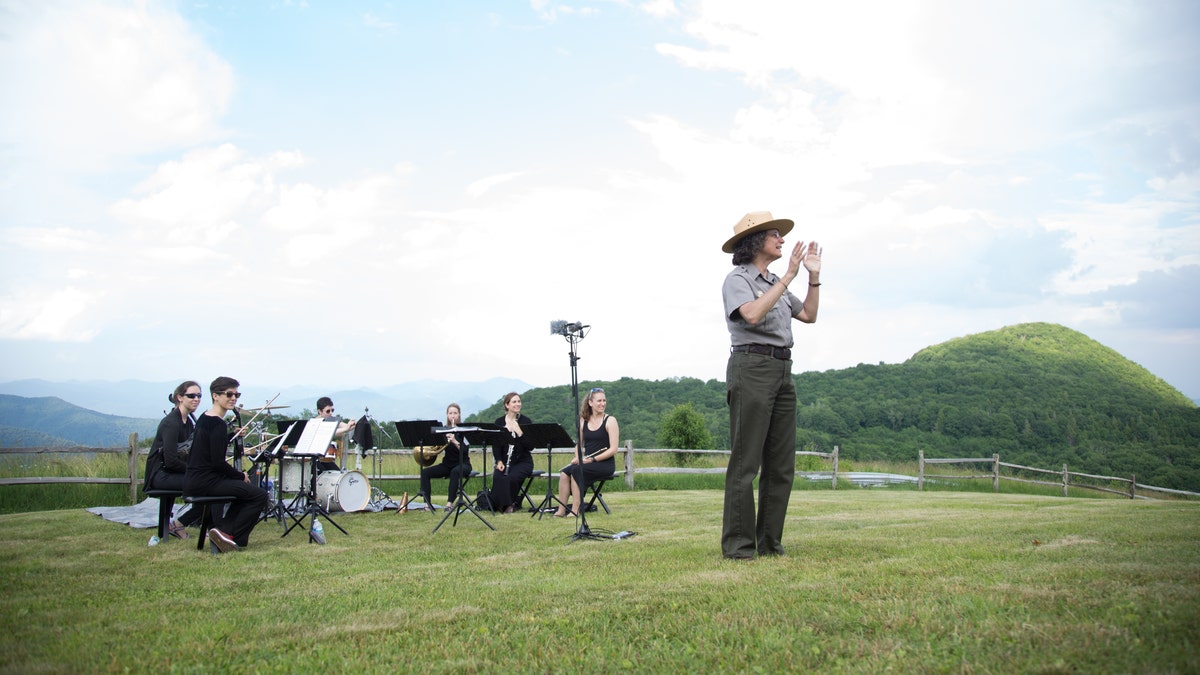This summer I embarked on a musical adventure through seven of our country’s celebrated national parks. As the flutist and director of Music in the American Wild, I led seven of my favorite musical collaborators on tour of parks across the country to premiere eleven new works celebrating the 2016 National Park Service centennial.
Our American national parks have long been places of artistic inspiration. Think of the photographs of Ansel Adams, the paintings of the Hudson River School, or the writings of John Muir; all of these master craftsmen were instrumental in illustrating to the American people the value of these beautiful, protected places.

One of the main goals for the Music in the American Wild tour was to reconnect our composers and performers, all alumni or faculty of Eastman School of Music, with this awesome natural inspiration that is available to us in our own national backyard. We wanted to encourage a new generation of listeners to become advocates for two of our country’s most valuable cultural resources: our arts and our protected lands.
Over the course of the tour we performed at Great Smoky Mountains, Mammoth Cave, Mount Rainier, North Cascades, Olympic, San Juan Island, and Shenandoah National Parks, among other venues in nearby cities and communities. We played concerts on mountaintops, in meadows, underground in caves and deep in forests, and in front of some of the most beautiful and striking views in the country. Each park we visited had its own special character.
Each national park site also presented our ensemble with a different sonic environment. The addition of chirping birds, whirring insects, running water, and gentle breezes added beautiful colors to our music that would never occur in a traditional concert hall. Playing in the open air allows both performer and listener to experience sound in a new way, as a small part of a much larger landscape.
Our audiences in the parks proved to me that classical music is not dying like so many sensationalist articles lead us to believe. It is alive and well, and like any living art it is constantly changing.
Bringing our music into this non-traditional context led to a heightened level of interaction and engagement with our audiences. In these natural theaters, the traditional rules of classical music performances dissolved, and our musicians and audiences could communicate more freely, more casually, and more intimately. One retired park ranger at Shenandoah tearfully shared with me that during a performance of one of our pieces, Chris Chandler’s Shenandoah-inspired “the view from here,” he closed his eyes and saw all the beautiful places in the park he served for so many years.
Another ranger, Olympic’s Barb Maynes, told us that our music expressed without words exactly what the National Park Service hopes to communicate through their work: these parks belong to everyone and exist to challenge and inspire us. They are sacred places in our shared American heritage, and they are vital cultural resources as well as natural ones.
The real inspiration, however, lies not merely in the places, but in the people with whom we shared our music in those places. Over the course of the summer, Music in the American Wild performed for thousands of listeners, some who came expressly to hear our concerts and others who just happened upon them. The warmth, enthusiasm, and support we received from our audiences and our National Park Service partners made the entire venture more meaningful and emotional than I could have dreamed at the outset.
Our audiences in the parks proved to me that classical music is not dying like so many sensationalist articles lead us to believe. It is alive and well, and like any living art it is constantly changing. For Music in the American Wild, this change, right now, means using our music to honor and celebrate all the wonders of our national parks and allowing our performers and listeners to experience classical music in these sacred spaces. This change, in a broader sense, means bringing new music to new audiences in new places and creating new avenues of musical interaction and engagement. In the realm of classical music, this is indeed a change for the better.




















